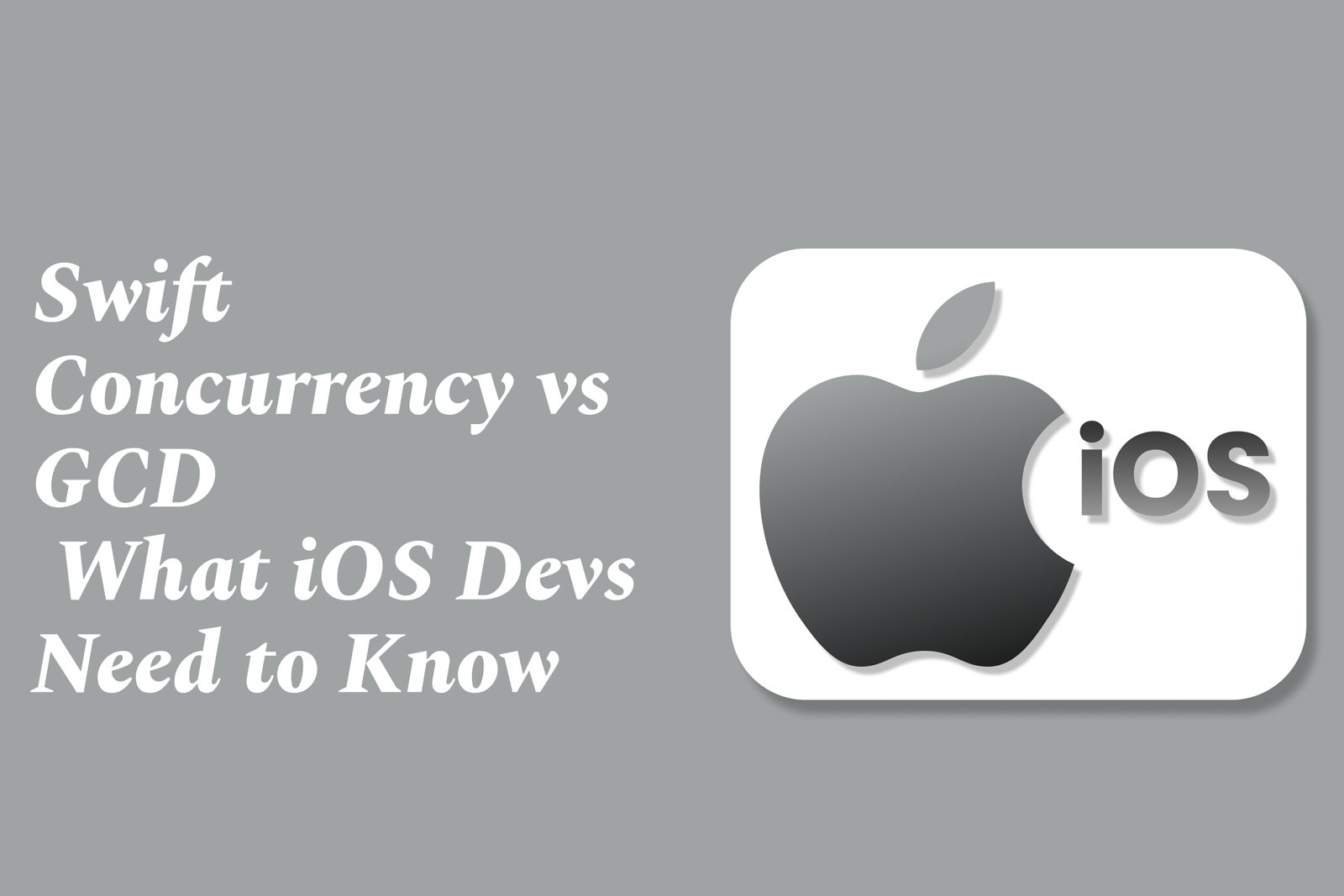Swift Concurrency vs GCD: What iOS Devs Need to Know
Swift Concurrency modernizes async programming with `async/await`, structured tasks, and actors for safer, clearer code in iOS 15+. GCD remains powerful for low-level thread management and legacy support. iOS devs should understand both to choose the best fit for their projects.
Swift Concurrency vs GCD: What iOS Devs Need to Know
1 ) Introduction to Swift Concurrency and GCD
Swift Concurrency, introduced in Swift 5.5, is a modern concurrency model aiming to simplify asynchronous and parallel programming by making asynchronous code resemble synchronous and sequential code. Grand Central Dispatch (GCD), a lower level API available in earlier Swift versions, provides powerful tools for managing serial and concurrent queues and running tasks in the background on multicore CPUs.
2 ) Key Concepts and Differences
Readability and Maintainability: Swift Concurrency uses `async/await` syntax to improve code clarity, making asynchronous operations appear linear and easier to follow compared to the callback based or closure based style often used with GCD.
Concurrency Model: Swift Concurrency introduces advanced features such as actors, task groups, and structured concurrency, which better handle common concurrency problems like data races and cancellation. GCD operates with serial and concurrent queues and is more manual in managing execution order and thread safety.
Execution and Scheduling: GCD maps tasks to system managed thread pools and lets developers specify Quality of Service (QoS) classes. Swift Concurrency similarly utilizes cooperative threading but adds a layer of abstraction that allows more fine grained control and safety.
3 ) Performance and Efficiency Considerations
Swift Concurrency benefits from optimizations in the Swift runtime and leverages the CPU more efficiently through structured task management.
GCD is mature and highly performant but requires careful management of resources and synchronization to prevent issues such as thread contention or deadlocks.
Developers have observed that Swift Concurrency's `TaskGroup` can express parallelism effectively but may see limitations in thread utilization on simulators compared to physical devices.
4 ) Best Practices and Use Cases
Use Swift Concurrency when aiming for safer, more readable asynchronous code with built in cancellation and error propagation, especially for new projects targeting iOS 15 and later.
Prefer GCD for backward compatibility or when fine tuned control over dispatch queues and execution contexts is required, such as for legacy code or specific performance optimizations.
Combining both can be practical, where Swift Concurrency handles high level asynchronous work and GCD manages lower level task dispatching.
5 ) Challenges and Developer Insights
Swift Concurrency is evolving, and developers need to understand its core constructs like `async/await` before adopting advanced features such as actors and continuations.
There can be unexpected behaviors in thread distribution (e.g., on simulators), so profiling and testing on actual devices are important.
GCD requires understanding of concurrent programming concepts like queues, QoS, and synchronization primitives to avoid subtle bugs.
6 ) Conclusion
Swift Concurrency marks a significant step forward in asynchronous programming on iOS by improving code clarity, safety, and structured parallelism. However, Grand Central Dispatch remains a powerful, flexible tool, especially for legacy support and finer control. iOS developers should familiarize themselves with both paradigms to make informed decisions based on project requirements, deployment targets, and performance needs.
https://justacademy.in/news-detail/how-react-native-is-simplifying-mobile-app-maintenance
https://justacademy.in/news-detail/building-pwas-with-flutter-in-2025
https://justacademy.in/news-detail/flutter-for-startups:-quick-mvp-building-guide
https://justacademy.in/news-detail/must-have-flutter-tools-for-designers
https://justacademy.in/news-detail/how-android-is-improving-privacy-in-2025
Related Posts
In 2025, top Angular libraries offer modern, feature-rich components and tools for building dynamic web apps. From powerful data grids to low-code platforms like UI Bakery, these libraries enhance development speed, UI design, and scalability, making them essential for Angular developers.
Migrating from AngularJS to Angular 17 involves gradually upgrading your app by running both frameworks together using tools like ngUpgrade, rewriting components in TypeScript, and adopting Angular’s modern architecture to enhance performance, maintainability, and long-term support.
Angular state management tools help organize and handle app data efficiently, improving scalability and maintainability. Popular options include NgRx for robust, RxJS-based patterns, and newer Signal Store solutions that offer simpler, reactive approaches integrated tightly with Angular’s latest features.
RxJS in Angular empowers developers to manage asynchronous data streams with powerful operators like `forkJoin`, `combineLatest`, and `zip`. Mastering these key operators in 2025 is essential for building efficient, reactive applications that handle complex event sequences seamlessly.
Angular performance optimization in 2025 focuses on improving app speed and responsiveness by using techniques like OnPush change detection, lazy loading, efficient data caching, and AOT compilation. These practices reduce load times, enhance user experience, and ensure scalable, fast Angular applications.
In 2025, Angular remains preferred for large-scale, enterprise apps with its robust, all-in-one framework, while Vue attracts developers seeking simplicity and fast development for smaller projects. Both frameworks excel, with choice driven by project needs and team expertise.
Angular Signals are a new reactive primitive in Angular 16 that enable fine-grained, efficient change detection by automatically tracking dependencies and updating only affected parts of the UI. They simplify state management and boost app performance, revolutionizing Angular's reactivity model.
Angular interview questions to prepare in 2025 focus on core concepts like components, directives, data binding, routing, and dependency injection, along with TypeScript mastery and latest Angular features to ensure strong practical knowledge for building scalable, efficient web applications.
AngularJS reached its official end of support in January 2022, meaning no further updates or security patches. To ensure app security and performance, developers should consider migrating to modern Angular versions or seek third-party long-term support options if immediate migration isn’t possible.
The Angular Roadmap 2025 highlights upcoming features focused on improving developer experience and performance, including zoneless Angular, Signals integration, enhanced Forms, async data handling, improved HMR, and expanded Angular Material/CDK enhancements, driving modern, efficient web app development.










